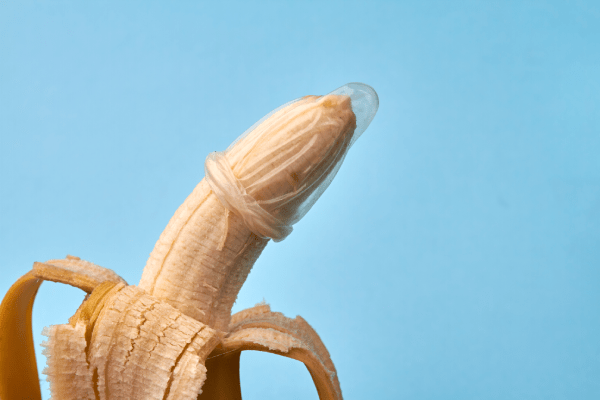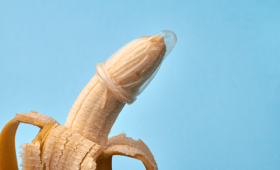What Are Realistic Expectations For Length Increase?
The length gain achievable with surgical operations is generally limited, and it is important to know that this increase is mostly noticeable in the flaccid state of the penis. Length enlargement surgeries rely on cutting the suspensory ligament inside the penis, thereby releasing the part hidden within the body. Most surgeons state that this method can provide an average gain of 1 to 3 centimeters. However, the reflection of this increase on the penis in an erect state varies greatly from person to person, and sometimes there may be no increase at all. It is vital for patients to clarify their expectations by getting a personalized assessment from a specialist before the surgery.
How Much Circumference Increase Can Be Achieved With Thickening Procedures?
Thickening procedures can generally yield visually more satisfying results compared to length increase. Thickening is typically done by injecting fat (fat transfer) taken from another part of the body or synthetic filler materials around the penis shaft. These methods can aim for an increase of 20 to 40 percent in the circumference of the penis. It should be kept in mind that some loss may occur in fat transfer as the body absorbs a portion of the injected fat over time. The permanence and homogeneity of thickening results can vary significantly depending on the material used and the surgical technique, making the choice of an experienced surgeon critical.
In Which Cases Is Suspensory Ligament Division Appropriate?
Suspensory ligament division (severing the suspensary ligament) can be an effective method for increasing length, especially for individuals who have fat accumulation in the pubis region and whose penis root is hidden inside. This surgery releases a part of the ligament that anchors the penis to the abdominal wall, making it look longer in the flaccid state. While this procedure is expected to provide length gain, patients should be informed about potential changes in the erection angle or firmness, as it alters the supportive structure of the penis. Suitability is determined by a detailed anatomical examination performed before the surgery.
What Is The Permanence Of Fat Injection Thickening?
The permanence of the result obtained after the thickening procedure with fat injection depends largely on the body’s reaction to the injected fat. A portion of the fat is naturally absorbed by the body, usually within the first few months, leading to a decrease in thickness. It is generally assumed that only 50 to 70 percent of the injected fat will remain permanent. Therefore, multiple sessions may be required to achieve a satisfactory result. Surgical techniques are constantly being developed to increase the survival rate of fat cells, but permanence varies according to individual metabolism.
Does Length Surgery Affect Erection Firmness?
Length surgery does not directly target the anatomical structures (corpus cavernosum) that affect erection firmness. However, cutting a part of the suspensory ligament that supports the penis can change the angle of the penis during erection (its projection). Some patients may state that the erection angle is slightly lower than its previous position. Even if there is no actual decrease in firmness, this situation can affect perceived satisfaction. Physiotherapy and special exercises after surgery can help minimize such angle changes.

Are Penis Filler Materials Safe?
The safety of filler materials used for penis thickening depends on the type of material used and the application technique. Hyaluronic acid-based fillers are generally preferred because they are biocompatible and can be dissolved in case of a complication. However, permanent synthetic fillers or foreign materials like silicone can carry risks of infection, foreign body reactions, deformities, and serious complications in the long term. Therefore, the homogeneous application of non-permanent, biocompatible materials by experienced specialists in the field is of great importance.
How Is The Postoperative Recovery Process?
The postoperative recovery process varies according to the surgical method applied. With simple filler applications, it is usually possible to return to normal daily activities within a few days. However, in more invasive length surgeries, such as suspensory ligament division, full recovery and seeing the final result can take 4 to 8 weeks. Swelling, bruising, and mild pain are common during the first few weeks. Heavy lifting and sexual activity must be strictly avoided during this period. It is essential to comply with all instructions given by the surgeon to accelerate the recovery process and support the desired result.
When Is It Possible To Return To Sexual Life?
The return to sexual life is a process that needs careful management, depending on the type of surgery and the patient’s individual healing rate. Most surgeons recommend that patients refrain from sexual activity (intercourse or masturbation) for at least 4 to 8 weeks for complete healing and full closure of the suture lines. Failure to comply with this period increases the risk of wound separation, infection, or permanent distortion of the thickening/length result. Approval from the specialist who performed the operation must be obtained before resuming sexual activity.
What Are The Most Common Complications Among Surgical Risks?
The most common complications in penis enlargement surgeries include temporary swelling (edema) and bruising, which usually resolve spontaneously within a few weeks. More serious risks include infection, bleeding, and especially lumps or asymmetry resulting from irregular distribution in fat or filler injections. In length surgeries, wound healing problems and, rarely, a change in penis angle may occur. It is important for patients to discuss all potential risks in detail with their surgeon for risk management and early intervention.
May More Than One Surgery Be Necessary?
Yes, especially in fat transfer procedures performed for thickening, more than one surgical session may be necessary. Due to the tendency of the body to absorb some of the injected fat, it is common to have additional filler or fat injections performed 6 months or 1 year apart to reach the desired final thickness. Length surgery is usually a one-time procedure, but some revisions or additional aesthetic corrections may rarely be required. Planning the treatment in stages from the beginning helps the patient better manage their expectations.
What Is Penile Dysmorphic Disorder And Is Surgery The Solution?
Penile Dysmorphic Disorder (PDD) is a psychological condition where an individual is excessively concerned about their penis size, even though it is within the normal range, and this significantly affects their daily life. Individuals who undergo surgery often do not resolve the psychological problem and have a high risk of dissatisfaction with the surgical results. Experts recommend that individuals suspected of PDD receive psychological counseling or therapy before surgical intervention. Surgery in a patient without realistic expectations can lead to permanent dissatisfaction.
Do Enlargement Procedures Affect The Penis Head (Glans)?
Standard penis enlargement surgeries (ligament cutting for length and shaft thickening) generally do not directly target the penis head (glans). However, since filler material or fat is injected into the penis root and shaft during thickening, an optical illusion may occur, causing the head portion to appear smaller relative to the shaft. Some surgeons may carefully apply minimal filler around the glans to improve this ratio, but this is a riskier area and requires experience.
Will There Be A Scar After Length Surgery?
Yes, a horizontal incision scar usually remains on the penis root, just below the pubic region, after length surgery (cutting the suspensory ligament). Although surgeons try to hide this scar as much as possible by making incisions parallel to the skin folds, the visibility of the scar depends on the patient’s skin type and the quality of wound healing. This scar usually fades over time and becomes less noticeable, but it never completely disappears. It is important for patients to accept this scar and its potential appearance.
Which Thickening Method Provides A More Natural Feel?
Generally, thickening procedures performed with fat transfer (lipofilling) taken from the patient’s own body are interpreted as providing a more natural and softer feel when touching the penis and during erection. Since fat is a natural tissue, it may tend to integrate better than synthetic fillers. However, if irregular areas form due to the risk of fat absorption, the natural feel may be lost. Homogeneous and uniform distribution of all materials used in thickening is the key to achieving a natural feel and appearance.
How Are Postoperative Deformities Corrected?
Postoperative deformities, lumps, asymmetry, or irregular distributions generally require a revision procedure. If the problem is caused by a filler material and the material used is hyaluronic acid, it can be dissolved with a special enzyme (hyaluronidase) for correction. For irregularities caused by fat transfer, surgical aspiration of a portion of the fat or injection of additional fat to fill the gaps may be necessary. Such corrections are usually planned after a certain recovery period following the initial surgery.
How Does Smoking Affect The Recovery Process?
Smoking is one of the most important factors negatively affecting the recovery process in all surgical procedures, including penis enlargement surgeries. Smoking restricts blood flow in the body and reduces oxygen-carrying capacity, which slows down wound healing and increases the risk of infection. Especially in fat transfer operations, impaired blood flow seriously reduces the chance of survival of the injected fat cells. Therefore, surgeons strongly advise quitting smoking for at least 2 to 4 weeks before and after the surgery.
Who Is The Ideal Surgery Candidate?
The ideal surgical candidate is primarily an individual with realistic expectations, in good physical and psychological health. Candidates are expected not to smoke or to quit before surgery. Candidates for surgical length increase may be individuals who generally think their penis is shorter than normal but have minimal concealment detected on physical examination, or those with excessive fatty tissue, particularly in the pubic region. Being psychologically stable and not showing signs of body dysmorphic disorder is critical for postoperative satisfaction.
Is There A Limit For Surgery Age?
There is generally no specific upper age limit for penis enlargement surgeries, but the patient’s general health status and suitability for anesthesia are the main determinants. The lower age limit is usually 18 years and over, as the individual should have completed their physical development. Some specialists may wait until older ages for the fat distribution in the body and groin area to settle. The suitability of patients of all ages for surgery must be determined by a comprehensive medical history evaluation and physical examination.
How Are Dermal Grafts And Matrices Used In Thickening?
Dermal grafts and matrices (e.g., acellular dermal materials from human or animal sources) can be used in penis thickening surgeries to provide a permanent and more homogeneous thickness. These materials are surgically wrapped around the penis shaft. Grafts are designed to be colonized by the body’s own cells over time, becoming a natural part of the penis. This method offers a higher rate of permanence and less risk of clumping compared to fat injections but requires a more invasive surgical procedure.

Is Device Use Mandatory After Length Surgery?
The use of penis traction devices is usually mandatory after length surgery (cutting the suspensory ligament) to maintain and even increase the gained length. Surgeons may recommend using these devices for several hours a day after wound healing is complete to gently pull the penis outwards, preventing the shrinkage (contracture) of scar tissue and making the length increase permanent. Regular and correct use of these devices is an important part of surgical success.
Does The Thickening Procedure Affect Penis Sensitivity?
Filler or fat injections used for thickening are applied to the outer layers of the penis, so they generally do not permanently negatively affect sexual sensitivity or orgasm feeling. However, temporary numbness or changed sensitivity may occur due to swelling and edema immediately after the procedure. Also, nerve compression or irritation may rarely be seen if the filler is irregularly applied in an area close to the nerves. An experienced surgeon can minimize this risk by avoiding nerve areas.
When Does The Swelling After Surgery Go Down?
Swelling (edema) after penis enlargement surgeries is a natural reaction of the body to surgical trauma. The majority of this swelling usually begins to subside rapidly within the first 2 to 3 weeks. However, especially in thickening procedures, it can take 3 to 6 months for the final result to fully settle and minimal swelling to disappear completely. It is important to use ice packs, doctor-recommended medications, and adhere to activity restrictions to support the healing process. Patience is part of this process.
What Is The Effect Of Weight Gain After Length Surgery?
Length surgery relies on cutting the ligament that connects the penis root to the pubic bone. If the patient gains significant weight after the surgery, the fatty tissue (pubis pad) accumulated in the abdominal and pubic area may grow again and pull the released part of the penis back inside. This causes the visual loss of the length gain achieved by the surgery. Therefore, patients who have undergone length surgery are strongly advised to maintain their ideal body weight to preserve the gain.
Where Is The Fat For Thickening Taken From?
The fat used for thickening (autologous fat transfer) is taken from the patient’s own body with a liposuction procedure. The preferred areas are usually the abdomen, hips, or inner thighs. The fatty tissue in these areas is generally of better quality and it is possible to obtain a sufficient amount of fat. After the fat is taken, it is purified through a special process, ensuring that only healthy fat cells are injected for thickening. This method offers both thickening and regional slimming advantages.
What Preparations Should Be Made Before Surgery?
Preoperative preparations are vital for the success and safety of the operation. Patients should stop using blood thinners (aspirin, etc.) and certain herbal supplements in the weeks leading up to the surgery. Quitting smoking is mandatory. In addition, a comprehensive medical examination and blood tests are performed before the surgery. The surgeon evaluates the patient’s expectations and psychological suitability. Attention should be paid to hygiene and the doctor’s instructions for nutrition should be followed on the night and day before the surgery.

What Are The Signs Of Potential Infection After Surgery?
Postoperative infection is a risk, as with any surgical procedure, and knowing the signs is important for early diagnosis. Common signs of infection include increased redness at the incision site, severe and progressively increasing pain, foul-smelling or copious discharge, and high fever. If any of these symptoms occur, the patient should immediately contact the surgical team. Early antibiotic treatment or drainage can prevent the infection from leading to more serious complications.
What To Do If The Scar Worsens After Length Surgery?
The worsening or thickening of the scar (hypertrophic scar or keloid) after length surgery is a condition that can be seen in some skin types. If the scar becomes aesthetically bothersome, various treatment options are available. These include silicone-based creams or tapes, cortisone injections, or revision surgery to correct the scar. Such treatments are usually planned months after the surgery, when wound healing is complete, and are managed in collaboration with a dermatologist or plastic surgeon.
What Are Alternative Tissue Materials For Thickening?
In addition to the patient’s own fat, various biological and synthetic materials can also be used for thickening. Examples include acellularized dermal matrices (Alloderm, etc.) processed from human cadavers or animal sources. These tissue materials are surgically wrapped around the penis, creating a permanent thickening scaffold, and are intended to turn into the body’s own tissue over time. These methods reduce the risk of fat absorption but require an additional surgical procedure and may be more costly.
How To Prevent Clumping After Fat Injection?
Clumping and irregularity after fat injection occur as a result of the injected fat being unevenly distributed or clustered in one area. To minimize this risk, the surgeon should take care to inject the fat into the penis shaft in micro-droplets, across many different layers and directions, to ensure a homogeneous distribution. The patient’s regular application of the recommended massage techniques after surgery can also help reduce the risk of clumping. Regular follow-up examinations ensure the early detection of possible irregularities.
Can Sports Be Done In The Early Postoperative Period?
After penis enlargement surgeries, heavy sports and intense physical activities must be strictly avoided, especially during the first 2 to 4 weeks. Activities like light walking can support healing by promoting blood circulation, but exercises that strain the abdominal muscles, weightlifting, or contact sports can put pressure on the stitches, increase the risk of bleeding, and negatively affect the final result. The decision on when to return to a sports program should only be made by the doctor based on the status of wound healing.
Why Can An Increase In Erection Size Not Be Guaranteed?
Length surgery (cutting the suspensory ligament) does not directly enlarge the erection mechanism of the penis (corpus cavernosum). The effect of the surgery is to release the part of the penis hidden within the body. Since the penis already reaches its maximum length during erection, this surgical intervention usually does not provide a noticeable and continuous increase in the erect size. A guarantee cannot be given because the gain obtained is mostly concentrated on the appearance in the flaccid state and the erect length is largely dependent on the individual’s genetic structure.
When Is Psychological Counseling Recommended?
Psychological counseling is strongly recommended when an individual’s concern about penis size significantly affects their daily life, relationships, or sexual self-confidence. If Penile Dysmorphic Disorder is suspected before requesting surgery, or if the expectations exceed the results achievable surgically, consulting a mental health professional is essential. Even a successful surgery may not solve the underlying psychological problem and can lead to a cycle of dissatisfaction.
Are The Costs Covered By Insurance?
Penis enlargement surgeries are generally considered aesthetic procedures unless there is a medical necessity (e.g., micropenis or severe Peyronie’s disease). Therefore, most public or private health insurance institutions do not cover the costs of such surgeries. Patients should assume that these procedures can be costly and that they will have to cover all expenses themselves. It is important to contact your insurance provider directly for clear information on insurance coverage.
Is It Possible For The Material Used In The Thickening Procedure To Dissolve?
For hyaluronic acid-based fillers most commonly used in the thickening procedure, yes, it is possible for the material to dissolve. In case of a complication, irregularity, or patient dissatisfaction, these fillers can be rapidly and safely dissolved with an enzyme injection called hyaluronidase. However, in other thickening methods such as fat transfer or permanent dermal matrices, surgical revision may be required to remove or correct the material, which is a more complex process.
Will There Be A Regression After Length Surgery?
It is rare for the cut suspensory ligament to fully repair itself after length surgery and for the penis to return to its previous position. However, the scar tissue formed in the region after surgery may tend to contract (contracture), and this may cause a portion of the gained length to be lost again. To prevent this regression and stabilize the gain, the regular use of the traction devices recommended by the surgeon and full compliance with postoperative instructions are vital. Weight gain can also accelerate regression.
How Is Postoperative Pain Management Done?
Postoperative pain management is critical for patient comfort and early mobilization. Depending on the type of surgery, the level of pain is usually intense for the first few days. Surgeons recommend using prescription pain relievers and anti-inflammatory drugs during this period. Regular use of pain relievers as prescribed ensures that the pain is kept under control. Pain usually decreases rapidly after the first week. Patients must immediately contact their surgeon if they experience severe pain that cannot be controlled.

How Long Should Research Be Done Before Surgery?
Since penis enlargement surgery is a serious decision with difficult reversal and potential risks, a comprehensive and unhurried research process is recommended before the surgery. Patients are advised to seek different expert opinions for at least 3 to 6 months, understand the risks and benefits of the procedures, prepare psychologically, and set realistic expectations. Rushing the decision-making process should be avoided, and it should be ensured that all questions are answered satisfactorily.
Can Length Surgery Be Done Together With Thickening?
Yes, length surgery (cutting the suspensory ligament) and thickening procedures (fat or filler injection) can generally be applied simultaneously in a single session. In fact, many patients prefer to have both procedures done at the same time to achieve a visually more balanced and satisfying result. Combined procedures can be more practical for patients as they require a single recovery period. It is important for the surgeon to be proficient in both techniques and capable of managing the risks of these combined procedures.
What Should Be Done To Reduce The Appearance Of Postoperative Scars?
Reducing the appearance of postoperative scars begins after wound healing starts (usually after the stitches are removed). Surgeons generally recommend using silicone gel or silicone sheets for scar management. Also, the wound should not be exposed to the sun, and sunscreen should be applied regularly. Keeping the skin moist during the healing process and applying the recommended massage techniques can help the scar become soft and less noticeable. Additional methods like laser treatments can be considered for severe scars.
Is The Length Gain After Surgery Permanent For Life?
The gain obtained with length surgery is theoretically permanent once the ligament is cut. However, preserving the gained length is largely dependent on the patient’s discipline in using postoperative traction devices and maintaining their body weight. If the patient gains weight and fat accumulates in the pubic region, the penis can be pulled back inside. Regular care and a healthy lifestyle are the most important factors for ensuring the lifelong permanence of the surgical result.
What Is The Effect Of Surgery On The Sexual Partner?
Penis enlargement surgeries can have both physical and psychological effects on the experience of both the individual and their sexual partner. Physically, the increase in thickness can enhance the feeling of fullness the partner may experience during intercourse. However, the psychological effect is more important; the increase in the patient’s self-confidence can positively affect sexual performance and communication with the partner. The partner’s expectations and opinions about the surgery should be openly discussed before the procedure.
How Should Postoperative Penis Care Be Done?
Postoperative penis care is critical for preventing infection and supporting wound healing. The surgeon usually gives specific instructions on how to keep the wound area clean and how to change the dressing according to the instructions given. This usually involves gentle cleaning and sterile bandage changes several times a day. Keeping the surgical area dry and using the doctor’s recommended antibiotic creams or ointments is important. Patients should pay maximum attention to hygiene and consult a specialist immediately if any changes occur.
Can The Thickening Procedure Be Repeated?
Yes, thickening procedures can be repeated to enhance the permanence of the results or to achieve the thickness desired by the patient, especially when fat transfer or non-permanent fillers are used. In fat transfer, it is common to have additional sessions 6 months or 1 year apart to compensate for the amount of fat absorbed by the body. In each repeat procedure, the surgeon assesses the previous results, creates a new injection plan, and aims for the best aesthetic result.
How Long Should I Use The Device After Length Surgery?
The duration of use of penis traction devices after length surgery depends on the surgeon’s protocol and the patient’s individual healing rate. Generally, patients are advised to use the device daily for several hours for 3 to 6 months to stabilize the gained length and prevent the contracture of scar tissue. The use of these devices helps the tissue released by the surgery naturally elongate and is the key to long-term success. The duration and method of use must be determined by the surgeon.
What Are Postoperative Scar Treatments?
Postoperative scar treatments aim to minimize the appearance of the scar and begin after wound healing is complete. The main methods include silicone gel sheets and creams, which help lighten the color of the scar and soften the tissue. For more pronounced or thickened scars, corticosteroid injections applied directly to the scar may be preferred to reduce inflammation and flatten the tissue. Laser treatments or chemical peels are among the other options used to improve the aesthetic appearance of the scar.
Which Type Of Surgery Is Preferred More Often?
Patients’ preferences are generally towards thickening, as the increase in thickness can offer results that are visually more striking and more noticeably felt in terms of sexual experience compared to the increase in length. Fat injections or filler applications are also frequently preferred because they are less invasive than length surgery. However, for patients who are also dissatisfied with the length, combined procedures (length and thickening together) have become an increasingly common approach.
When Is The Final Result Seen After Surgery?
Patience is required to see the final and permanent result after penis enlargement surgeries. Although the first noticeable results after length surgery are seen within weeks, the final length can be evaluated around 6 months after scar contraction has completely stopped. In thickening procedures, it can take 6 to 12 months for the injected fat or filler to settle fully and for the swelling to completely subside. It is important to monitor the changes that occur in the body during this period.


